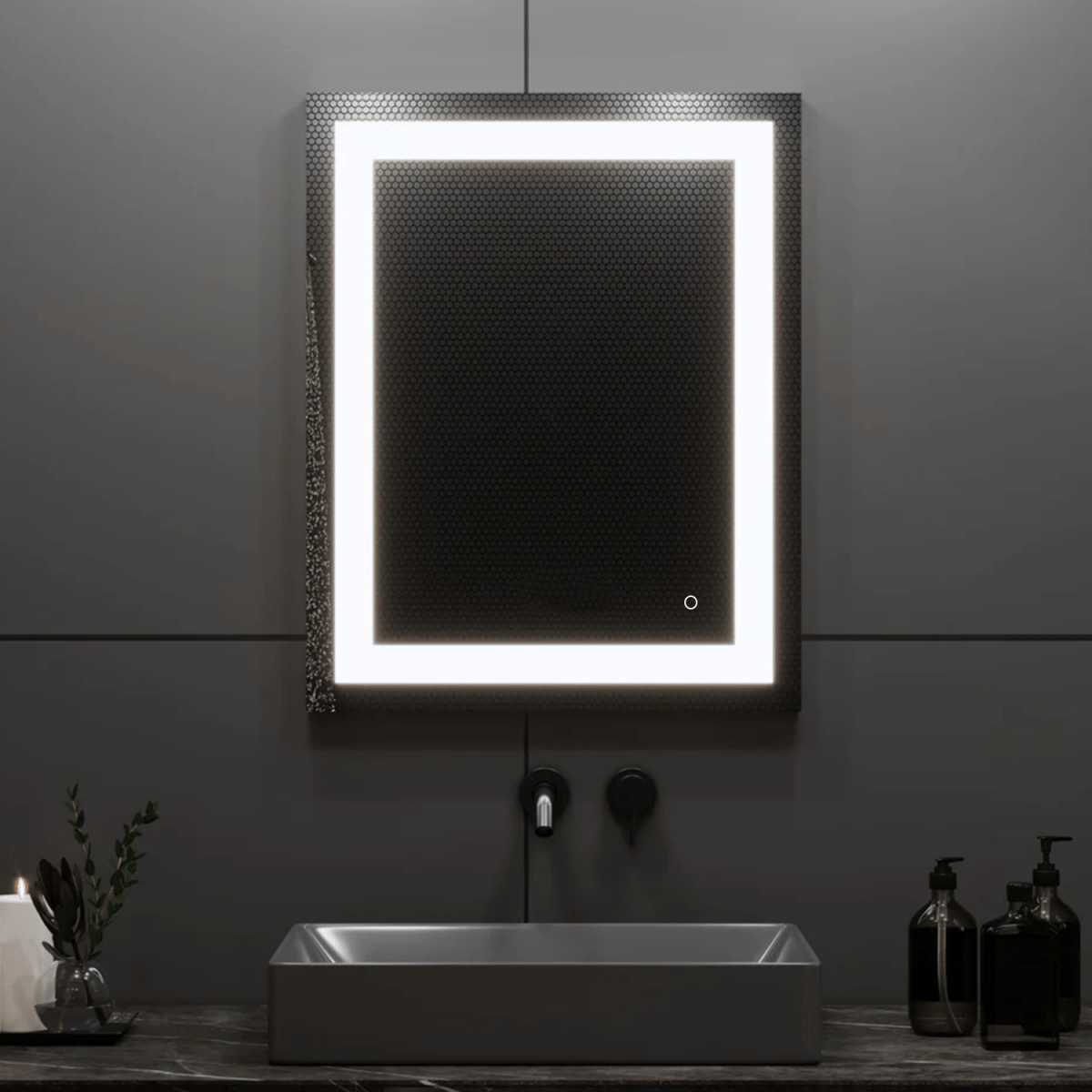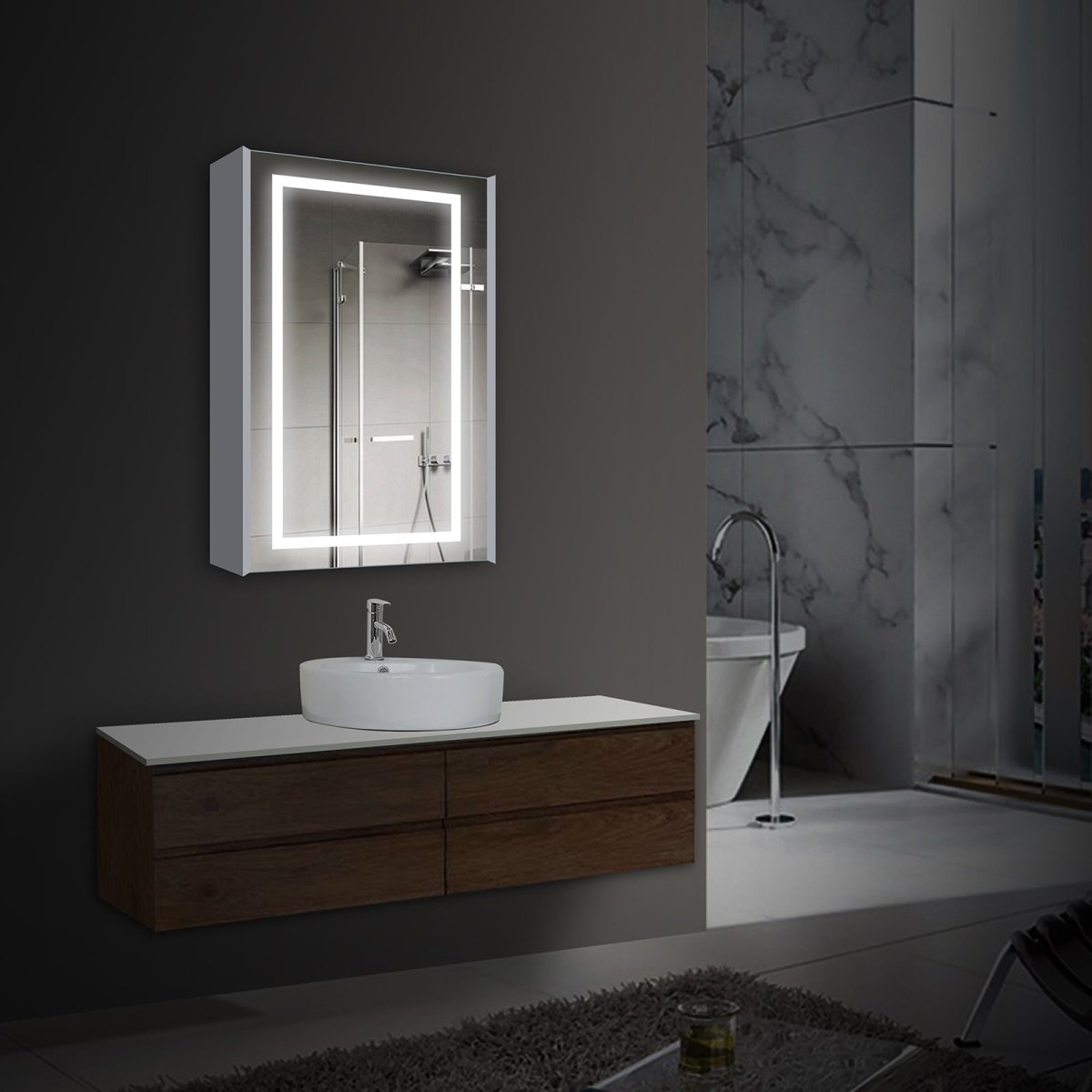LED mirrors have gained significant popularity in recent years due to their stylish design and functional illumination. These mirrors provide a modern and elegant touch to any space while offering enhanced lighting for various activities. If you're wondering how these LED mirrors get their power supply, this article will guide you through the intricacies of their functioning.
Introduction
LED mirrors have revolutionized the way we perceive and utilize mirrors in our everyday lives. Beyond being a simple reflective surface, these mirrors incorporate LED lights into their design, enhancing their functionality and aesthetics. In this article, we'll explore the different power options for LED mirrors, their installation, and other essential considerations.
Understanding LED Mirrors
What are LED Mirrors?
LED mirrors, also known as Lighted Vanity Mirrors, are mirrors that feature built-in LED lights around their edges or behind the mirror surface. These lights are strategically placed to provide even illumination for tasks like makeup application, skincare routines, or general grooming. LED mirrors come in various shapes and sizes, allowing you to choose the one that suits your specific needs.
Why are LED Mirrors Popular?
LED mirrors have become increasingly popular due to their numerous advantages over traditional mirrors. The built-in LED lights eliminate the need for additional lighting fixtures, reducing clutter in your space. Additionally, LED lights offer a clear and bright illumination that closely resembles natural daylight, ensuring accurate color representation and enhancing visibility.
Benefits of LED Mirrors
LED mirrors offer several benefits that make them a preferred choice for many individuals. The key advantages include:
- Enhanced lighting: LED mirrors provide consistent and adjustable lighting for various tasks, ensuring optimal visibility and reducing shadows.
- Energy efficiency: LED lights consume less energy compared to traditional lighting sources, resulting in energy savings and reduced electricity bills.
- Long lifespan: LED lights have a significantly longer lifespan compared to traditional bulbs, minimizing the need for frequent replacements.
- Environmentally friendly: LED lights are free from harmful substances like mercury, making them a greener choice for your home.
- Customization options: LED mirrors often feature adjustable brightness levels, color temperature settings, and even dimming functions to suit your preferences.
Powering LED Mirrors
LED mirrors can be powered through different methods, depending on the design and installation requirements. Let's explore the most common power supply options for LED mirrors.

Internal Power Supply
Many LED mirrors are equipped with an internal power supply system. These mirrors are typically hardwired to your home's electrical system, utilizing a direct power connection. The electrical wiring is concealed within the mirror structure, providing a clean and seamless appearance. Hardwired LED mirrors require professional installation and are ideal for permanent installations in bathrooms or dressing areas.
External Power Supply
Alternatively, some LED mirrors utilize an external power supply. These mirrors come with a power cord that needs to be plugged into a nearby electrical outlet. The cord can be discreetly routed behind the mirror or concealed within the wall. LED mirrors with an external power supply offer flexibility in terms of installation and can be easily moved or relocated if needed.
Battery-Powered LED Mirrors
For added portability and convenience, there are battery-powered LED mirrors available in the market. These mirrors are powered by replaceable or rechargeable batteries, eliminating the need for electrical connections. Battery-powered LED mirrors are suitable for spaces where electrical outlets are not easily accessible or when you prefer a cord-free setup. However, it's important to note that battery-powered mirrors require regular battery replacements or recharging to maintain optimal performance.
Wiring and Electrical Components
To ensure proper functionality and safety, LED mirrors incorporate specific wiring and electrical components. Let's take a closer look at these essential elements.
Power Cords and Plugs
LED mirrors with an external power supply feature power cords that connect the mirror to an electrical outlet. These cords are designed to be long enough for convenient positioning and are often equipped with standard plugs compatible with most outlets. Some LED mirrors may also provide the option for hardwiring, allowing you to connect the mirror directly to your electrical system.
Transformers and Adapters
In cases where the LED mirror operates on low voltage, a transformer may be included to convert the electrical current from your home's standard voltage to a lower voltage suitable for the mirror. Transformers ensure safe and efficient power delivery to the mirror's LED lights. Additionally, adapters may be provided to accommodate different plug types or voltage requirements based on the region or country.
LED Light Strips
The LED lights in the mirror are typically arranged in the form of light strips. These strips consist of multiple LED bulbs that emit bright and focused light. The LED light strips are carefully integrated into the mirror's frame or behind the mirror surface, ensuring uniform illumination and minimizing glare.
Installation and Maintenance
The installation process for LED mirrors may vary depending on the type and design. Here are some key considerations for installation and maintenance:
Wall-Mounted LED Mirrors
Wall-mounted LED mirrors require proper anchoring to ensure stability and safety. Before installation, it's crucial to locate the wall studs or use appropriate wall anchors for secure attachment. Additionally, it's recommended to consult a professional electrician for hardwired installations to ensure compliance with electrical codes and safety regulations.
Tabletop LED Mirrors
Tabletop LED mirrors are generally more portable and easy to install. They often come with a sturdy base or stand, allowing you to place them on a flat surface like a vanity table or bathroom counter. When positioning the mirror, consider the proximity to electrical outlets if it requires an external power supply or the availability of lighting if using a battery-powered option.
Cleaning and Care
To maintain the appearance and functionality of your LED mirror, regular cleaning is essential. Use a soft, non-abrasive cloth or microfiber cloth to remove dust, smudges, or fingerprints from the mirror surface. Avoid using harsh chemical cleaners that can damage the mirror or the LED lights. Additionally, ensure the power supply is disconnected before cleaning to prevent any accidents or electrical hazards.
Safety Considerations
When dealing with electrical devices like LED mirrors, it's crucial to prioritize safety. Here are some important safety considerations:
Electrical Safety
If you choose to install a hardwired LED mirror, it's essential to hire a qualified electrician to handle the electrical connections. They will ensure proper wiring, grounding, and adherence to electrical codes and regulations. If you're installing the mirror yourself, make sure to follow the manufacturer's instructions carefully and use appropriate tools and safety precautions.
Water Resistance
LED mirrors intended for use in bathrooms or other areas with high moisture levels should have appropriate water resistance ratings. Look for mirrors with IP (Ingress Protection) ratings, indicating their level of protection against water and dust intrusion. This ensures the safety of both the electrical components and the users.
Overheating Prevention
LED mirrors are designed to dissipate heat efficiently. However, it's important to avoid obstructing the ventilation openings or placing the mirror in close proximity to heat sources. Adequate ventilation helps prevent overheating and ensures the longevity of the LED lights and electrical components.
Choosing the Right LED Mirror
When selecting an LED mirror for your space, consider the following factors:
Size and Design
Choose a mirror size that suits your needs and the available space. Consider the dimensions of the mirror and how it will fit into your desired location. Additionally, LED mirrors come in various designs, including rectangular, round, or oval shapes, allowing you to select a style that complements your decor.
Light Intensity and Color Temperature
LED mirrors offer different light intensities and color temperatures. Consider the intended use of the mirror and the level of brightness required. Some mirrors provide adjustable brightness settings to cater to different lighting preferences. Similarly, color temperature options range from warm white to cool white, allowing you to create the desired ambiance.
Dimming and Adjustability
If you prefer versatility in lighting, look for LED mirrors that offer dimming capabilities. Dimmable mirrors allow you to adjust the brightness according to your needs and create different moods or lighting effects.
Environmental Impact
LED mirrors are a sustainable choice compared to traditional lighting options. Consider the following environmental factors:
Energy Efficiency
LED lights are highly energy-efficient, consuming less electricity compared to traditional lighting sources. This efficiency helps reduce energy consumption and lower your carbon footprint. Look for LED mirrors with high energy efficiency ratings or certifications such as ENERGY STAR.
Lifespan and Durability
LED lights have an impressive lifespan, lasting significantly longer than traditional bulbs. This extended lifespan reduces the frequency of replacements and the associated waste. Additionally, LED mirrors are often made with durable materials, ensuring longevity and reducing the need for replacements due to breakage or wear.
Recyclability
When the time comes to replace your LED mirror, consider its recyclability. Look for mirrors made with recyclable materials and check if the manufacturer provides recycling options. Responsible disposal and recycling help minimize environmental impact.
Conclusion
LED mirrors are a stylish and functional addition to any space, providing enhanced lighting for various activities. Whether powered by internal wiring, an external power supply, or batteries, these mirrors offer flexibility and convenience. When choosing an LED mirror, consider factors like size, design, lighting options, and environmental impact. Remember to prioritize safety during installation and maintenance to ensure optimal performance and longevity.
FAQs
-
How long do LED mirrors last? LED mirrors have a long lifespan, typically ranging from 50,000 to 100,000 hours of usage. This translates to several years of regular use before the need for replacement arises.
-
Can LED mirrors be used in bathrooms? Yes, LED mirrors designed for bathrooms are specifically built with water-resistant features to ensure safe use in high-moisture environments.
-
Can LED mirrors be dimmed? Many LED mirrors offer dimming capabilities, allowing you to adjust the brightness according to your preference and lighting needs.
-
Can LED mirrors be hardwired? Yes, LED mirrors can be hardwired by connecting them directly to your home's electrical system. Professional installation is recommended for hardwired setups.
-
Are LED mirrors expensive? LED mirrors come in a wide range of prices, depending on factors such as size, design, features, and brand. There are options available to suit various budgets and preferences.


























































































